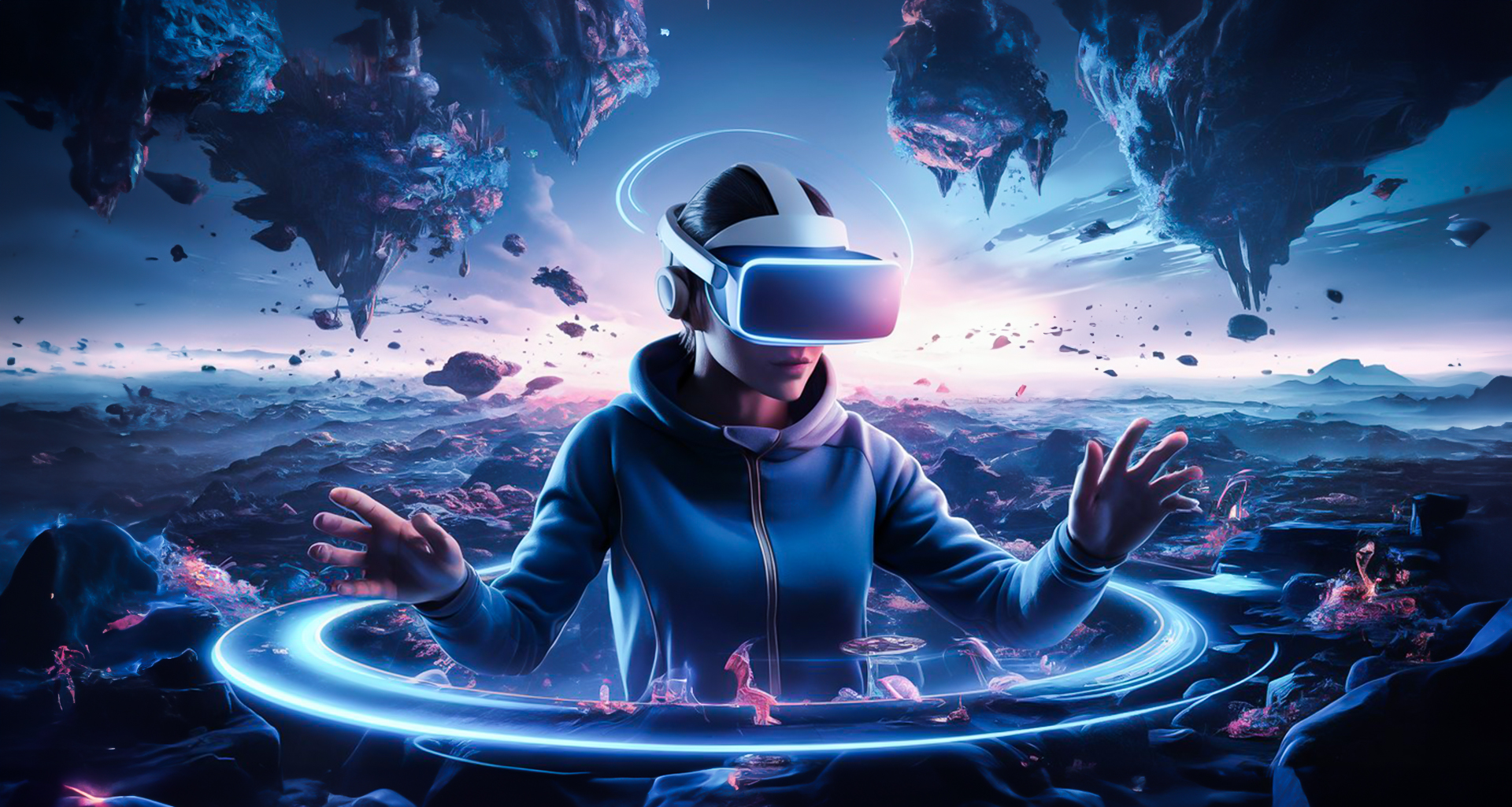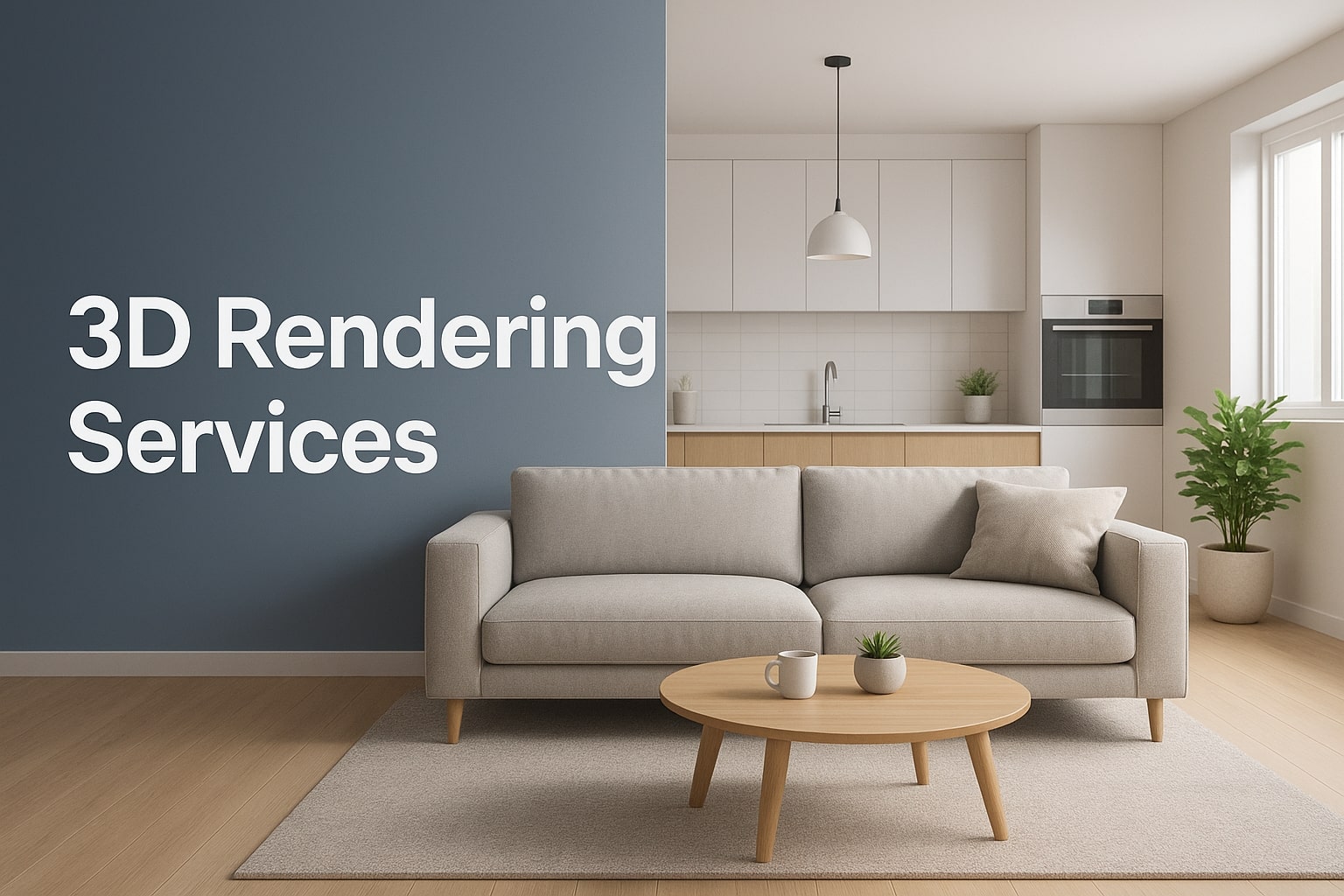For decades, the standard for high-quality 3D Rendering relied on offline processes—where powerful computers spent hours, or even days, calculating complex light bounces and shadows to produce a single, photorealistic image. This method was slow, resource-intensive, and inherently non-interactive.
Today, thanks to exponential advancements in GPU technology and the maturity of dedicated gaming engines (like Unreal Engine and Unity), the world of visualization has undergone a revolutionary shift: the rise of Real-Time Rendering.
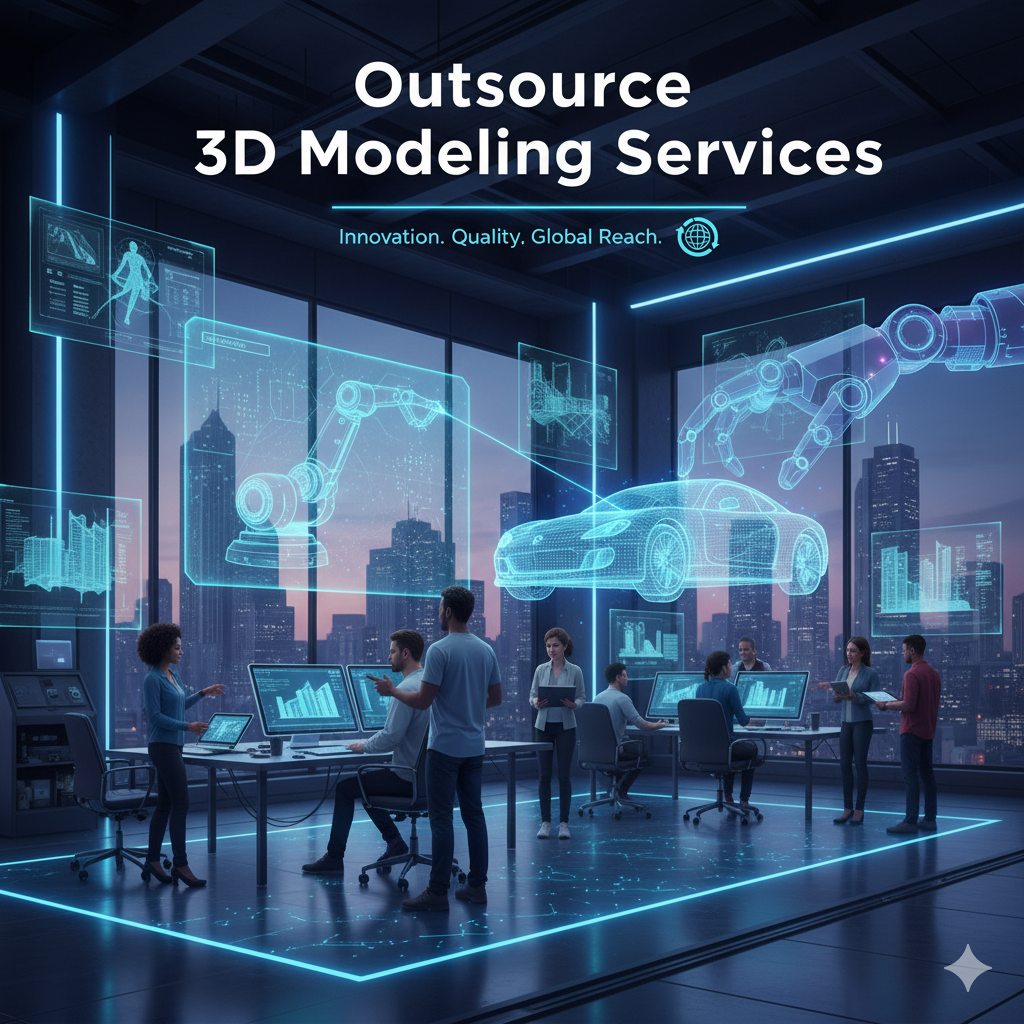
This technology is no longer confined to video games; it is the new backbone for 3D Architecture, 3D Product Design, and retail visualization. For businesses, this seismic shift means that the criteria for selecting an Outsource 3D Modeling services partner must prioritize real-time proficiency. The future of visualization demands assets that are not just beautiful, but instantly interactive and ready for the immersive world of Augmented Reality – Virtual Reality (AR/VR).
The world of 3D Modeling and Design is experiencing a fundamental transformation, shifting away from the bottleneck of slow, pre-calculated images to the dynamic speed of Real-Time Rendering. Once the domain of video games, this technology has become the single most powerful driver of efficiency, interactivity, and conversion across industries—from 3D Architecture visualization to e-commerce and 3D Product Design.
Part I: Defining the Real-Time Revolution in 3D Modeling and Design
Understanding the fundamental shift from traditional (offline) rendering to real-time is the first step in leveraging its advantages.
1. The Speed and Agility Advantage
Traditional rendering required time for every minor change—a shift in lighting, a material update, or a change in camera angle meant restarting the render process.
- Instant Iteration: Real-time rendering allows changes to be made and visualized instantly. This dramatically accelerates the design and approval cycle for 3D Product Design and 3D Architecture projects, cutting weeks of back-and-forth communication down to hours.
- Cost Efficiency: By eliminating the need for vast, dedicated render farms that crunch data for days, the cost associated with high-quality visualization is drastically reduced. The focus shifts from computing power time to artist optimization time.
- Direct Client Engagement: Real-time allows clients to directly explore, interact with, and comment on a model in a shared virtual space, fostering a level of engagement and collaboration previously impossible with static images.
2. The AR/VR Gateway
Real-time rendering is the only technology that can power immersive experiences. Every Augmented Reality – Virtual Reality application, from a simple phone-based AR viewer to a high-end VR training simulation, runs on a real-time engine.
- Performance is Key: The models produced by an Outsource 3D Modeling services partner must be meticulously optimized to maintain the high frame rates (usually 60-90 FPS) required to prevent motion sickness and ensure a smooth experience in Augmented Reality – Virtual Reality. This necessitates deep expertise in real-time engine constraints.
- Unification of Assets: The shift means that a single master model can be created and optimized to serve multiple purposes: generating high-resolution marketing images via the engine, and then being exported as a lightweight asset for mobile AR.
Part II: Specialized Workflows Transformed by Real-Time

Real-time 3D Rendering is fundamentally changing how specific industry projects are handled by Outsourced 3D Modeling Projects.
3. 3D Furniture Modeling and Interactive Retail
For e-commerce and retail, real-time visualization is the ultimate sales tool.
- Digital Configurators: Real-time rendering allows customers to customize a 3D Furniture Modeling product—changing fabric, finish, and style—and instantly see the updated 3D Rendering without delay. This capability drives higher conversion rates and reduces buyer uncertainty.
- AR “Try-Before-You-Buy”: The ability to place a 1:1 scale model of the furniture in one’s home via a smartphone is powered by the instantaneous rendering capabilities of mobile AR frameworks. The Outsource 3D Modeling services partner’s proficiency in real-time optimization directly enables this consumer feature.
- Material Fidelity with Texturing: Real-time engines leverage advanced PBR (Physically Based Rendering) Texturing workflows to ensure that digital materials—like wood grain or plush fabric—react realistically to virtual light, maintaining photorealism at interactive speeds.
4. 3D Architecture and Collaborative Design Review
Real-time visualization has moved architectural review from 2D plans to immersive, 1:1 scale virtual walkthroughs.
- Immersive Client Presentations: Architects can lead clients through a full-scale virtual model of a building using VR headsets or touch screens. The real-time environment allows for instant lighting changes (time of day), material swaps, and spatial exploration—critical for identifying design flaws before construction.
- BIM Integration: Real-time engines are increasingly capable of importing BIM data directly, allowing the Outsource 3D Modeling services partner to create dynamic, data-rich visualizations that are tied to the building’s core information.
- Virtual Staging: Real estate and 3D Architecture firms use real-time 3D Rendering for virtual staging, placing photorealistic 3D Furniture Modeling and decor into empty spaces instantly, a significant cost saving over physical staging.
5. 3D Product Design and Rapid Prototyping
Real-time tools accelerate the design-to-market cycle for consumer goods.
- Virtual Prototypes: Designers can use real-time environments to test and iterate dozens of variations of a 3D Product Design—changing color, material, and form—and visualize the changes instantly, reducing the need for expensive physical prototypes.
- Marketing Assets: A single real-time model can be used to generate high-fidelity marketing visuals, interactive web viewers, and Augmented Reality – Virtual Reality components, simplifying the creative pipeline and reducing overall Outsourced 3D Modeling Projects costs.
Part III: The Technical Shift in Outsourced 3D Modeling Projects
Real-time expertise requires a unique skill set and a shift in the traditional 3D Modeling and Design workflow.
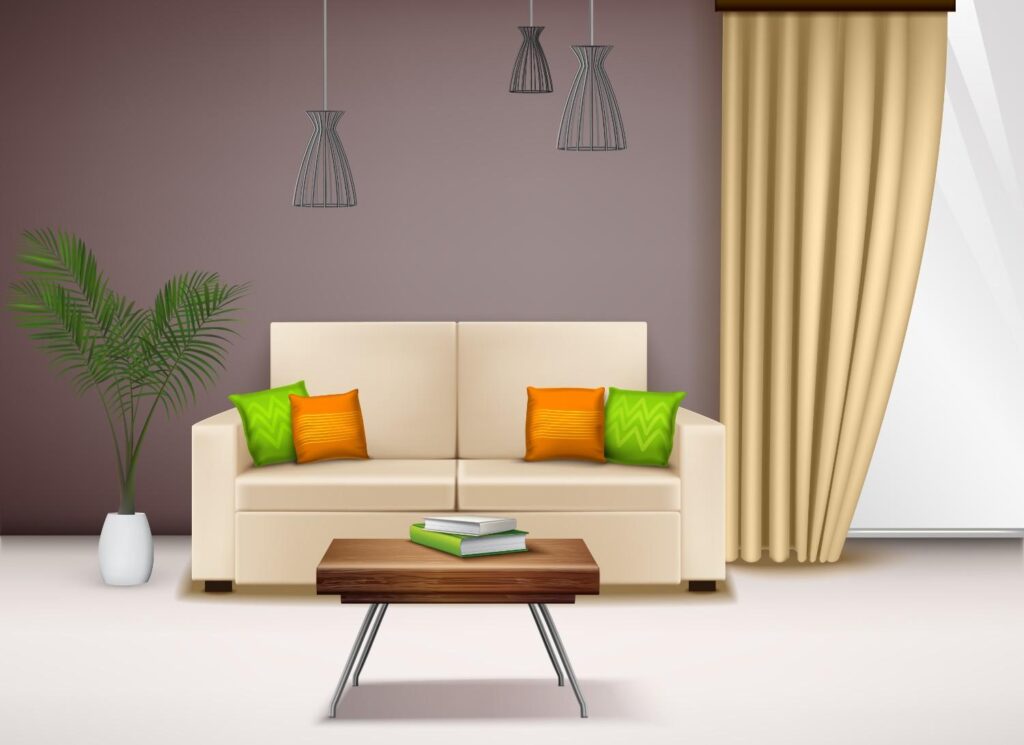
6. The Texturing and Material Science Mandate
In real-time environments, visual quality relies more heavily on Texturing than on polygon count.
- PBR Workflow Mastery: The cornerstone of real-time realism is the PBR workflow. An ideal Outsource 3D Modeling services partner must be expert in creating and applying high-quality PBR maps (Albedo, Normal, Roughness, Metallic) to ensure materials react correctly to real-time lighting.
- Optimization vs. Detail: The challenge is to preserve detail while optimizing geometry. This is achieved through texture baking, where complex lighting and surface information is baked onto the simplified, low-polygon mesh, a critical step for Augmented Reality – Virtual Reality readiness.
7. The Optimization Specialists
Real-time 3D Modeling and Design is an engineering discipline first, and an art form second.
- Clean Topology and Mesh Reduction: The outsourced team must possess technical artists who specialize in creating clean, quad-based topology and efficiently performing mesh reduction to create multiple LODs (Levels of Detail) for a single model.
- Real-Time Engine Proficiency: The partner must demonstrate native expertise in core real-time engines (Unity, Unreal Engine). They must understand the nuances of lighting, shading, and the engine’s built-in optimization tools to ensure the final deliverable is ready for immediate deployment.
Part IV: Strategic Partnership for the Future
Selecting a partner proficient in real-time is a strategic decision that future-proofs the brand’s creative assets.
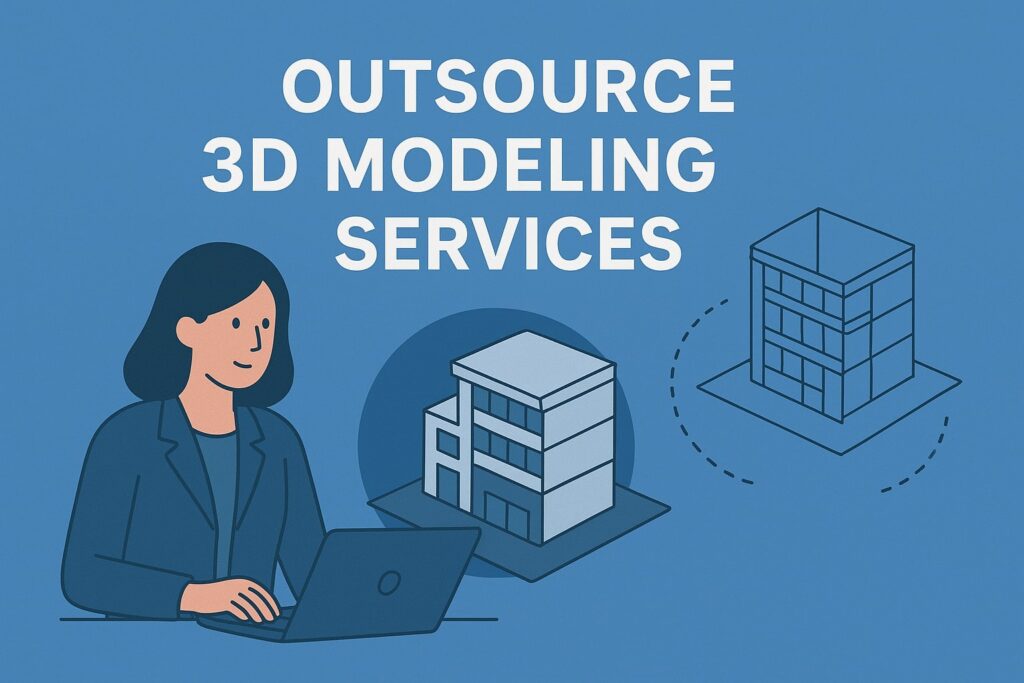
8. Scalability and the Future of 3D Rendering
The demand for real-time visualization is massive and requires elastic capacity.
- Instant AR/VR Readiness: The partner provides the instant ability to convert large product catalogs (e.g., thousands of 3D Furniture Modeling assets) into real-time optimized formats, a level of scalability that is nearly impossible to maintain internally.
- Focus on Innovation: By delegating the technical complexities of real-time pipeline management, the client’s internal team is freed to focus on strategic design, creative direction, and the development of new product lines, maximizing their value.
9. The Seamless Deliverable
The final model must be ready for integration into the client’s preferred real-time system.
- Clean File Formats: The output of Outsourced 3D Modeling Projects must be clean, correctly scaled, and exported in the required format (FBX for engines, GLB/USDZ for mobile AR), eliminating friction during the deployment phase.
- Data Integration: For complex 3D Product Design, the real-time model must be structured to support metadata and component-level configurability, integrating seamlessly with e-commerce platforms.
🎯 Conclusion: Real-Time is the New Baseline
The shift toward real-time 3D Rendering marks the final evolution of 3D Modeling and Design. It is the technology that links visualization directly to interaction, making it indispensable for Augmented Reality – Virtual Reality, e-commerce, and collaborative design.
For brands in 3D Architecture, retail, and manufacturing, the strategic partner must be an expert in real-time execution. By leveraging Outsource 3D Modeling services with proven real-time proficiency, businesses gain the agility, technical excellence, and speed required to transform their static visions into dynamic, profitable, and immersive experiences. Real-time is no longer an optional feature; it is the new baseline for successful Outsourced 3D Modeling Projects.
❓ Frequently Asked Questions (FAQ)
1. What is Real-Time 3D Rendering, and how is it different from traditional rendering?
Real-Time 3D Rendering generates images instantly (often 60+ frames per second) using GPU power, allowing for immediate interaction, as used in games or Augmented Reality – Virtual Reality. Traditional rendering takes hours or days per image and is used for static, non-interactive visualizations.
2. Why is Real-Time expertise essential for Outsource 3D Furniture Modeling?
It’s essential because it enables interactive e-commerce features. Real-time models are optimized for AR “try-before-you-buy” experiences and digital product configurators, which boost sales conversion rates and reduce product returns.
3. What technical skill does Outsource 3D Modeling services provide for Augmented Reality – Virtual Reality readiness?
The key skill is Optimization. This involves reducing the polygon count (mesh reduction) and Texturing details efficiently so the model loads instantly and maintains a high frame rate on mobile AR/VR devices, a process critical for smooth performance.
4. How does Real-Time 3D Rendering speed up 3D Architecture projects?
It allows for instantaneous design iteration. Architects and clients can walk through the virtual building model (often in VR) and see changes to lighting, materials, and design elements instantly, accelerating the design review and approval process.
5. What is the role of PBR Texturing in Real-Time 3D Rendering?
PBR (Physically Based Rendering) Texturing is critical for realism. It ensures that materials (like metal or wood) react accurately to the virtual lighting within the real-time engine, maintaining visual fidelity and realism at interactive speeds for 3D Product Design.
6. Does Real-Time 3D Modeling and Design reduce the final image quality?
Not necessarily. Modern real-time engines are capable of near-photorealistic quality. While they are lower in polygon count than traditional offline models, the quality of Texturing, lighting, and optimization ensures high visual fidelity, especially for final delivery in Augmented Reality – Virtual Reality or interactive web viewers.
